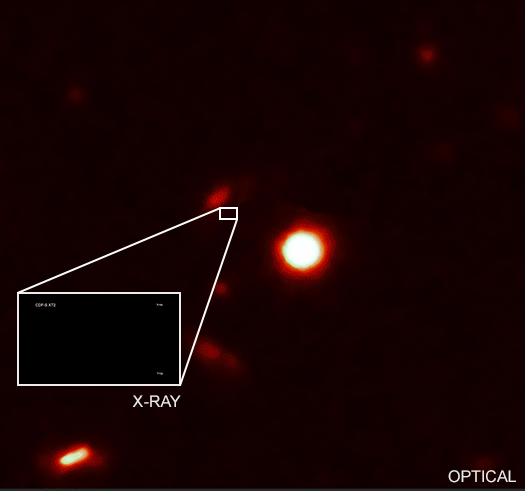
These images show the location of an event, discovered by Chandra, that likely signals the merger of two neutron stars. Unlike other neutron star mergers, this one was not observed as a gamma-ray burst. Included are a wide field of view shows a Hubble optical image of a portion of the Chandra Deep Field-South field, and a smaller field of view that shows the Chandra image focusing only on the source dubbed XT2. A bright burst of X-rays in XT2 could give astronomers fresh insight into how neutron stars — dense stellar objects packed mainly with neutrons — are built. Credit: X-ray: NASA/CXC/Uni. of Science and Technology of China/Y. Xue et al; Optical: NASA/STScI
- A neutron star merger without an observed gamma-ray burst has been discovered using NASA’s Chandra X-ray Observatory.
- This result gives astronomers another way to track down neutron star mergers as well new information about their interiors.
- This source, called XT2, is located in the Chandra Deep Field-South, the deepest X-ray image ever obtained.
- By studying how XT2 changed in X-ray brightness, astronomers were able to identify it as two neutron stars that merged into a larger one.
These images show the location of an event, discovered by NASA’s Chandra X-ray Observatory, that likely signals the merger of two neutron stars. A bright burst of X-rays in this source, dubbed XT2, could give astronomers fresh insight into how neutron stars — dense stellar objects packed mainly with neutrons — are built.
XT2 is located in a galaxy about 6.6 billion light-years from Earth. The source is located in the Chandra Deep Field South (CDF-S), a small patch of sky in the Fornax constellation. The CDF-S is the deepest X-ray image ever taken, containing almost 12 weeks of Chandra observing time. The wider field of view shows an optical image from the Hubble Space Telescope of a portion of the CDF-S field, while the inset shows a Chandra image focusing only on XT2. The location of XT2, which was not detected in optical images, is shown by the rectangle, and its host galaxy is the small, oval-shaped object located slightly to the upper left.
On March 22, 2015, astronomers saw XT2 suddenly appear in the Chandra data and then fade away after about seven hours. By combing through the Chandra archive, they were able to piece together the history of the source’s behavior. The researchers compared the data from XT2 to theoretical predictions made in 2013 of what the X-ray signature from two colliding neutron stars without corresponding gamma-ray bursts would look like.
When two neutron stars merge they produce jets of high energy particles and radiation fired in opposite directions. If the jet is pointed along the line of sight to the Earth, a flash, or burst, of gamma rays can be detected. If the jet is not pointed in our direction, a different signal is needed to identify the merger. This result provides scientists with an opportunity to study just such a case.
X-rays from XT2 showed a characteristic signature that matched those predicted for a newly-formed magnetar, that is, a neutron star spinning around hundreds of times per second and possessing a tremendously strong magnetic field about a quadrillion times that of Earth’s.
The team think that the magnetar lost energy in the form of an X-ray-emitting wind, slowing down its rate of spin as the source faded. The amount of X-ray emission stayed roughly constant in X-ray brightness for about 30 minutes, then decreased in brightness by more than a factor of 300 over 6.5 hours before becoming undetectable. This showed that the neutron star merger produced a new, larger neutron star and not a black hole.
XT2’s bright flare of X-rays gives astronomers another signal — in addition to the detection of gravitational waves — to probe neutron star mergers.
A paper describing these results appeared in the April 11th issue of Nature, led by Yongquan Xue (University of Science and Technology in China). NASA’s Marshall Space Flight Center in Huntsville, Alabama, manages the Chandra program for NASA’s Science Mission Directorate in Washington. The Smithsonian Astrophysical Observatory in Cambridge, Massachusetts, controls Chandra’s science and flight operations.
Reference: “A magnetar-powered X-ray transient as the aftermath of a binary neutron-star merger” by Y. Q. Xue, X. C. Zheng, Y. Li, W. N. Brandt, B. Zhang, B. Luo, B.-B. Zhang, F. E. Bauer, H. Sun, B. D. Lehmer, X.-F. Wu, G. Yang, X. Kong, J. Y. Li, M. Y. Sun, J.-X. Wang and F. Vito, 10 April 2019, Nature.
DOI: 10.1038/s41586-019-1079-5

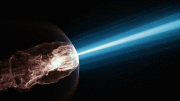
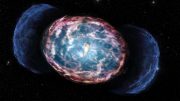
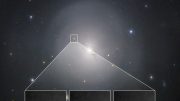
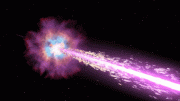
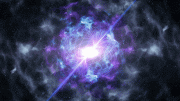
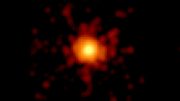
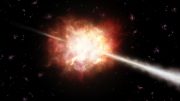
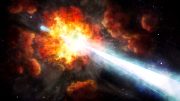
I guess 6.5 BLYs is too far for the Grav. waves to be detected with current tech. Too bad.